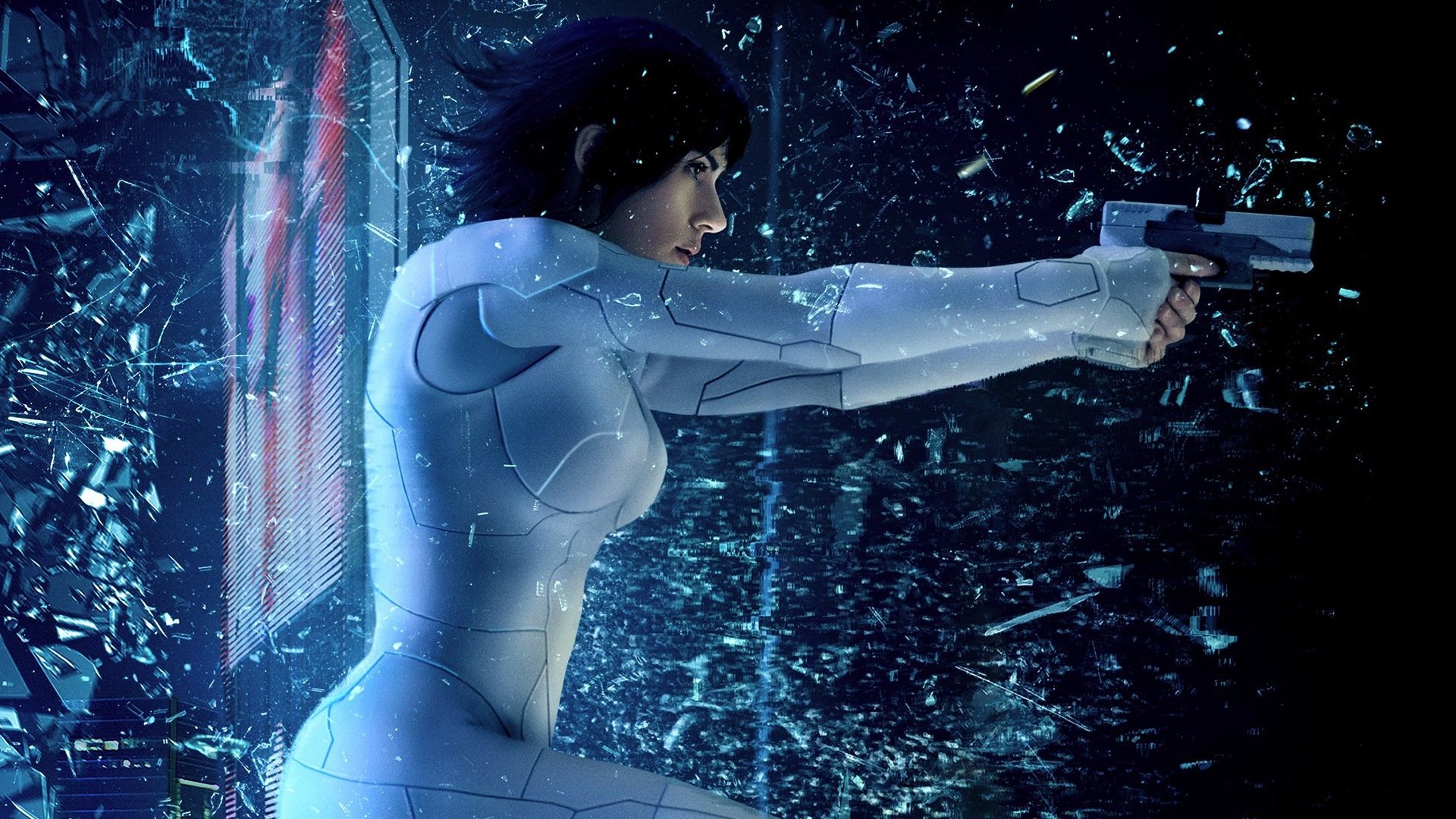Mamoru Oshii’s 1995 cyberpunk opus Ghost in the Shell, one of the first Japanese anime titles to cross
over to Western audiences, has been reissued and repackaged so often since the
millennium that it’s scant surprise studio execs seized upon it as reproducible
property. Possibly it was a matter of waiting: for digital effects houses to
get up to spec, the right deals to be struck, and any accusations of cultural
appropriation to blow over. Paramount’s all-new live-action Ghost, powered by hefty reserves of
American and Far Eastern money, emerges as a dazzling logistical display with a
missing file where the human interest might once have been stored.
Fans need not blubber unduly: as overseen by Snow White and the Huntsman’s Rupert Sanders,
this transliteration would seem faithful enough to satiate those who just want
to see favourite scenes and characters redrawn on the biggest screen
imaginable. As that suggests, what’s been tinkered with is the scale: Oshii’s
knotty postmodern inquiries into identity – a stopover on that fin-de-siècle
sci-fi continuum connecting Blade Runner
to The Matrix – are here stretched
into IMAX-ready, 3D-enabled spectacle. Blown up to this magnitude, ideas
already threadbare through twenty years of recycling start to look doubly thin.
Narratively, there’s little to separate the two movies. Again,
we open on the creation of a cyborg – Scarlett Johansson’s Major, being a human
brain, retrieved in the wake of a fatal accident, set lovingly in a
slinky-dinky metal-plastic carapace – who evolves to exist at the mercy of
multiple masters. There’s the counterterrorism chief (Takeshi Kitano) who dispatches
her to investigate a series of assassinations; the female engineer (Juliette
Binoche, slumming elegantly) who nurtures her and patches her up; and her corporate
manufacturers – embodied by Peter Ferdinando’s brooding Mr. Cutter – who regard
her as no more than an asset on a spreadsheet.
More compelling than any of these figures, however, is the
realm they pass through. The flawed but glitzy Snow White rehash positioned Sanders as a facilitator of lavishly
visualised if faintly derivative worlds; armed here with both the latest
modelling software and several skilled analogue collaborators – production
designer Jan Roelfs (Gattaca), emergent
cinematographer Jess Hall (Transcendence)
– he goes into hyperdrive. Every scene thrusts out something to catch (and
occasionally caress) the eye: murky drinking dens besieged by scuttling,
arachnoid attendants, a watery virtual limbo where binary ones and zeroes float
up like bubbles.
So yes, it’s the shiniest of kit; whether the emotions are
stirred is another matter. Johansson sets the level of engagement, by playing
the impervious shell rather better than she does the restless ghost. In 2013’s
unsettling Under the Skin, the
actress was directed into signalling a hybrid’s dawning consciousness (and
conscience); here, she’s limited to looking puzzled while convoluted plot stuff
streams around her. The time Johansson has logged among the Avengers means she
could perform the role’s asskicking aspects in her sleep – but in so many other
scenes, she appears to be on autopilot: left to execute commands, rather than
encouraged to flesh this part out.
Supporting players are defined chiefly by their hairstyles. Snowtown ne’er-do-well Daniel Henshall
models a mullet that identifies him as an individual of questionable judgement;
Major’s sidekick Pilou Asbaek sports a shock of white fluff that might work for
manga heroes but turns grown men into Billy Idol tribute acts. As his
explosion-blackened corneas are replaced with ophthalmic lenses, you sense a
rampant techno-decorousness beginning to consume the performers – a instinct
compounded upon seeing Buddhist monks plugged into a towering cable router
redolent of Avatar’s Tree of Life.
Like much else here, it’s striking but second-hand.
That last image has presumably been designed to chime with a
moment when even the Dalai Lama delivers his wisdom in 140-character bytes, yet
– like the allusions to corporate overreach and female consent – it doesn’t
connect meaningfully with anything else: the data collected from Oshii’s film
is pinged round inside the new film’s circuitry without it ever threatening to
accumulate any critical mass. The result is a Ghost for the Twitterati, all flashing lights and pretty colours,
at once distracting and distractible, busily spinning its wheels ahead of a
citytrashing finale that recalls… well, every other citytrashing finale of the
past half-decade.
As with Twitter, the film is not without its passing,
superficial pleasures, and non-devotees might soak up some of its stimuli for
future repurposing as profile photos, or as the backdrop to a club night. Sanders
is becoming increasingly adept at framing the kind of images any 14-year-old
would deem cool (Scar-Jo in slo-mo, erupting through plate glass in latex!),
which should ensure smooth progress in the modern movie business. Yet whatever
philosophical nuggets were lurking amid Oshii’s tangled plotting, they surely
merited closer consideration by a filmmaker who wasn’t just trading in gloss,
and doesn’t merely regard human beings as elements of design.
Grade: B-

No comments:
Post a Comment